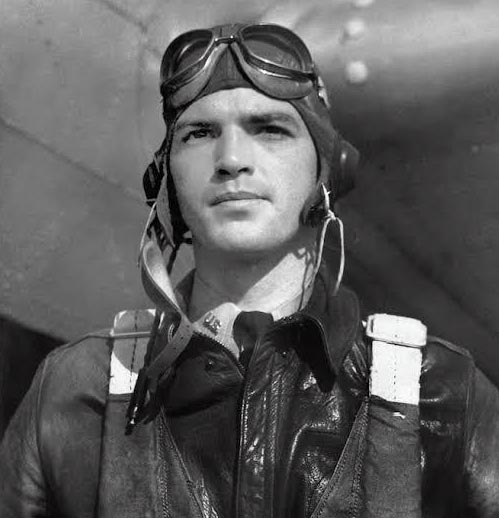The epic story of the first B-17 bomber shot down in combat in World War II
The Boeing B-17 Flying Fortress was the most famous bomber of World War II, in which it carried out numerous missions against ground targets.
However, most of its first missions during that war, in the Pacific theater, were for the purpose of making maritime patrols in search of the Japanese fleet, attacking it with bombs at high altitudes -so as not to expose himself to the anti-aircraft artillery of the Japanese ships- and without causing hardly any damage to the enemy, since it was very difficult to hit targets at such a distance.

One of those early maritime patrol missions began on the morning of December 10, 1941, three days after the Japanese attack on Pearl Harbor. A lone B-17C, 40-2045, under the command of Captain Colin Kelly, took off from Clark Field Air Base, on the island of Luzon, in the northern Philippines, with the aim of locate an enemy aircraft carrier off the coast of Aparri.
This B-17C was assigned to the 14th Bomb Squadron of the 7th Bomb Group of the 5th Air Force, carried three 270kg bombs and flew without escort aircraft. South of Vigan, Kelly's B-17C sighted the Japanese heavy cruiser Ashigara, believing it to be the battleship Haruna. The B-17C dropped all three of its bombs at the ship, reporting a hit, although it was a misreport as the Japanese cruiser suffered no damage.

As Kelly's B-17C was returning to its base, it was intercepted by several Japanese A6M2 Zero fighters, whose pilots included Saburō Sakai, who later would become a famous Japanese ace. The fighters made two passes firing their machine guns at the B-17C and causing serious damage. Ultimately, the aircraft suffered a fire in the bomb bay. Knowing that the bomber would not be able to return to his base, Captain Kelly ordered the surviving crew to bail out, while he tried to keep the plane level for that jump to be successful.
The last to jump was co-pilot Robbins, who jumped out of the plane because of an explosion in the fuselage. After a new explosion, the B-17C plummeted, crashing to the ground near Mount Arayat. Thanks to the heroism of that pilot, his teammates managed to parachute down near Clark Field.

When the wreckage of the B-17C was located, Captain Kelly's body was found outside the plane, probably ejected by the last explosion that occurred in the bomber before it hit the ground. Kelly was posthumously nominated for the Medal of Honor, the highest US military decoration, but was ultimately awarded the Distinguished Flying Cross. Soon his story became famous and he was considered the first American hero of World War II. This is precisely what was indicated on his grave in the Madison Oak Ridge Cemetery in Madison, Florida, next to the following epitaph taken from the Gospel of Saint John: "Greater love hath no man than this, that a man lay down his life for his friends."
You can see here the video published by TJ3 History about the history of this B- 17C and Captain Kelly:
|
Don't miss the news and content that interest you. Receive the free daily newsletter in your email: |
- Most read
- The 'hole' without civil flights around Paris during the opening of the Olympic Games
- Stunning footage of the F-15QA Ababil in flight recorded from its cockpit
- The firearms used by the Pontifical Swiss Guard, the smallest army in the world
- The most distant deployment of the Spanish Air Force in Australia and New Zealand
- Eurofighter vs F-35: the opinions of professional pilots on these advanced fighters
- The first photo of an F-16 fighter with Ukrainian insignia and the details it has revealed
- This is the driver station of an M1 Abrams tank and the impressive start of its engine

 ES
ES







Opina sobre esta entrada: